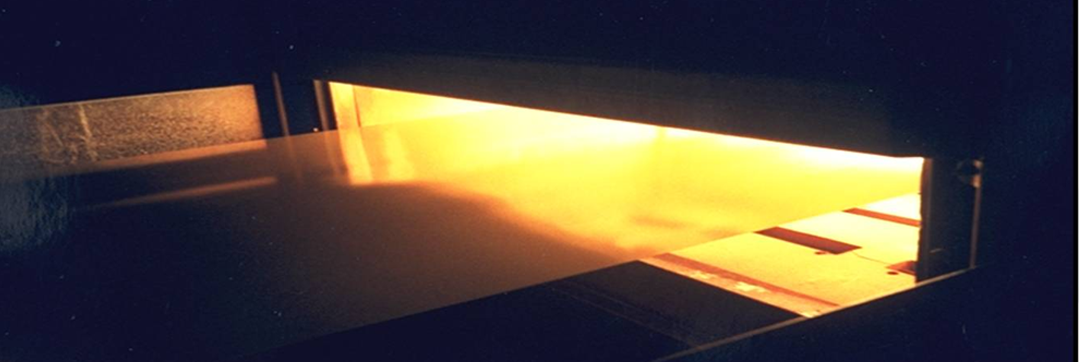Frequently Asked Question
What is IR?
 Infrared (IR) is a part of electromagnetic spectrum and lies just beyond red color of visible light. Infrared is invisible. However it has properties similar to light i.e. it travels at the speed of light, it can be directed or focussed and it can travel even in vacuum.
Infrared (IR) is a part of electromagnetic spectrum and lies just beyond red color of visible light. Infrared is invisible. However it has properties similar to light i.e. it travels at the speed of light, it can be directed or focussed and it can travel even in vacuum.
When IR radiation is absorbed by an object , heat is generated internally in the object as IR causes the atom of the object to vibrate, raising its temperature. ( Temperature of any substance is a measure of the severity of the vibration of its atoms.) IR does not need a medium like air to heat a substance. IR wavelengths begin at 0.7 microns and wavelengths up to 10 microns have significance as far as industrial heating is concerned. These wavelengths are determined by the IR source temperature and each temperature has a characteristic spectrum with a "peak wavelength". A graph showing typical spectral distribution of energy for different types of IR sources is shown here.
The Ranges are :
SW : 1800 - 2200 oC
FMW : 1200 - 1800 oC
MW : 750 - 1200 oC
LW upto 750 oC
What are the advantages of IR?
Infrared heating is regarded as the preferred source of heating for various applications because of the advantages it offers:
Non contact heating
Better quality of the product
One stage heat transfer
High energy efficiency
Faster rate of heating
Shorter heating cycles,
consequently shorter oven lengths
for continuous operations
Low thermal inertia
Shorter heat up and cool down time
Emitters that respond instantly
High controllability and control accuracy
No combustion by-product
Clean system
Modular construction
Flexibility
Is Infrared harmful to human health?
No. All human beings are exposed to infrared in the form of the sun and even through the household electric lamp. It has no known adverse effect on living cells. Over exposure to IR by direct eye contact should be avoided. In fact people use IR for medical use and tanning.
Can Litel quartz IR lamps be used in vertical positions?
Yes. There are specially manufactured lamps which can be utilized in universal (any orientation) positions. For such applications, please specify this requirement.
Is moisture in my existing process dangerous to IR heating?
No. Contrary to most electric lamps, the quartz in Litel lamps has significant thermal shock resistance. In fact, to prove this point, a live demonstration of ice cubes on a full intensity IR lamp has been successfully conducted.



